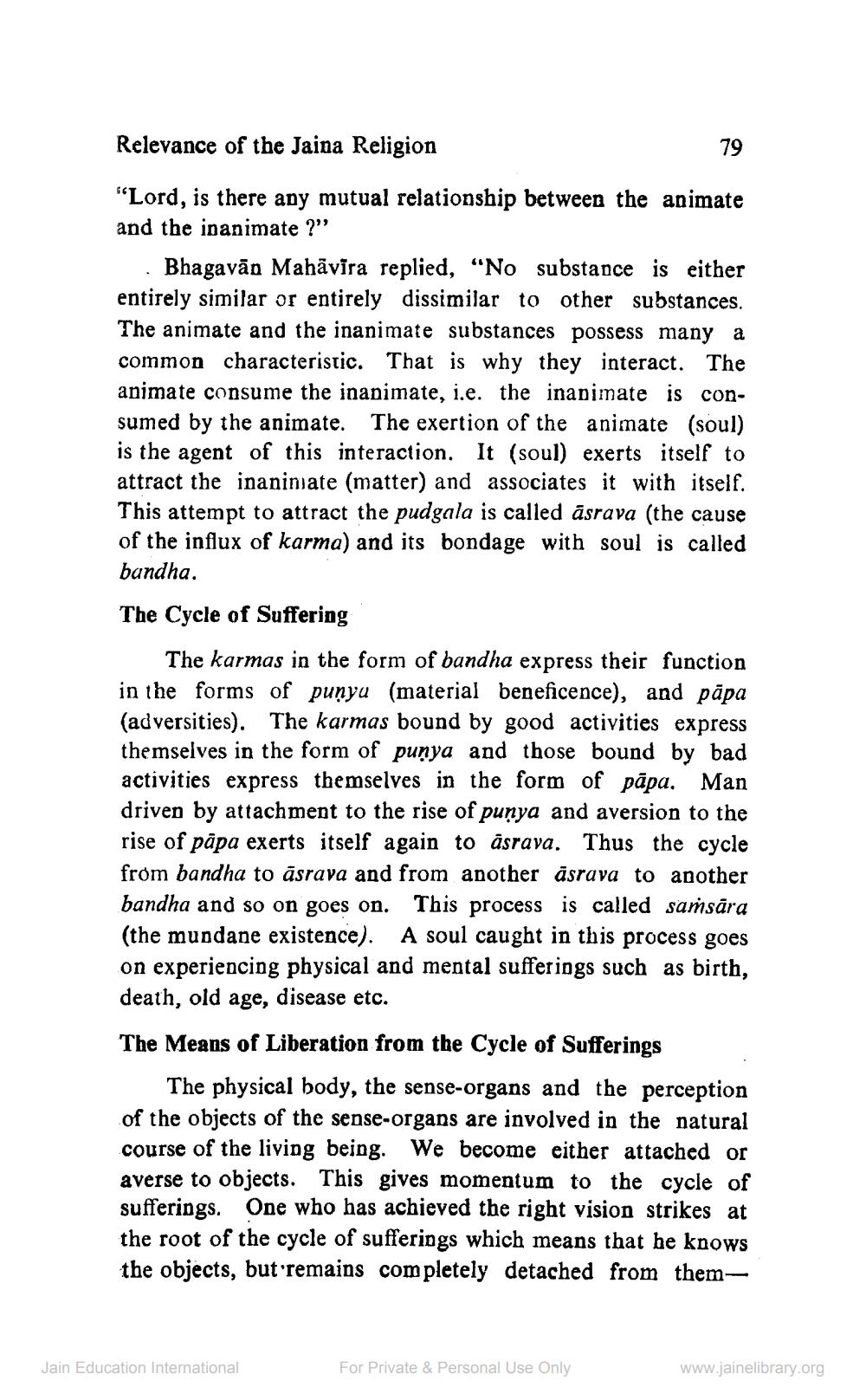________________
Relevance of the Jaina Religion
"Lord, is there any mutual relationship between the animate and the inanimate ?"
Bhagavan Mahāvīra replied, "No substance is either entirely similar or entirely dissimilar to other substances. The animate and the inanimate substances possess many a common characteristic. That is why they interact. The animate consume the inanimate, i.e. the inanimate is consumed by the animate. The exertion of the animate (soul) is the agent of this interaction. It (soul) exerts itself to attract the inanimate (matter) and associates it with itself. This attempt to attract the pudgala is called āsrava (the cause of the influx of karma) and its bondage with soul is called bandha.
79
The Cycle of Suffering
The karmas in the form of bandha express their function in the forms of punya (material beneficence), and papa (adversities). The karmas bound by good activities express themselves in the form of punya and those bound by bad activities express themselves in the form of pāpa. Man driven by attachment to the rise of punya and aversion to the rise of papa exerts itself again to asrava. Thus the cycle from bandha to asrava and from another asrava to another
bandha and so on goes on. This process is called samsāra (the mundane existence). A soul caught in this process goes on experiencing physical and mental sufferings such as birth, death, old age, disease etc.
The Means of Liberation from the Cycle of Sufferings
The physical body, the sense-organs and the perception of the objects of the sense-organs are involved in the natural course of the living being. We become either attached or averse to objects. This gives momentum to the cycle of sufferings. One who has achieved the right vision strikes at the root of the cycle of sufferings which means that he knows the objects, but remains completely detached from them
Jain Education International
For Private & Personal Use Only
www.jainelibrary.org




